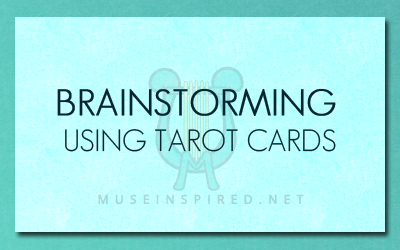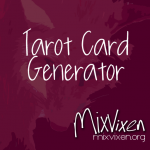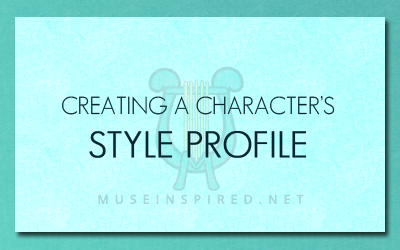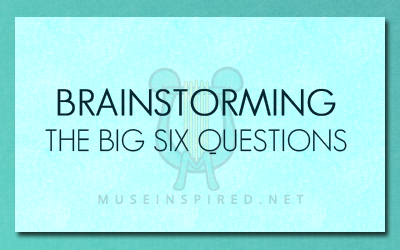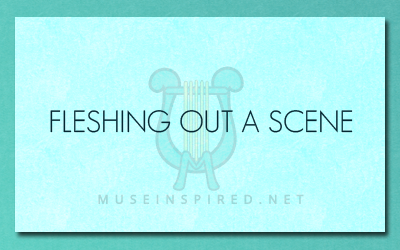
Coming up with scenes to put in your story is easy. You may even have a breeze of a time writing the first draft and getting it down on paper. But what’s next? How do you turn your scene from a skeleton to something fully fleshed out without adding too much purple prose, unnecessary description, or pointless padding?
Lets look at a few things you can use to give a scene more life.
Appearance
Painting a picture of your character can be as simple as dropping a few descriptors here and there with your sentences. The color of their hair or eyes, the shape of their body, tattoos, scars, facial expressions, and so on.
Scenery
Scenes are not just a white void of nothing. Where are your characters? Are they in a bedroom? A coffee shop? When they look around, what are things they take notice of? You can describe landscape, furniture, walls, weather, and more.
Actions
Characters are not going to be standing still doing absolutely nothing, even if the scene isn’t chock full of action.They might be smoking a cigarette, fidgeting with their fingers, straightening up the living room, or looking at their cellphone as they talk. Have your characters interact with the scenery around them.
Scents
Often underused, scents can add tons to your scene. Outside there might be the scent of fresh cut grass, smoke from a fire, bread from a local bakery. Indoors they might smell cleaning products, musty old couches, or a teenager’s rank bedroom. There are even people smells like perfume, breath, and shampoos.
Thoughts & Feelings
Depending on the point of view you’re writing from, thoughts and feelings could come in to play. What is the character thinking about their surroundings? The people they’re with? Their current issues? What kind of emotion is driving them at that moment? Love? Hate? Sadness?
Dialogue
There is bound to be dialogue in most of your scenes. Your character could be speaking out loud to themselves, praying to a god, singing to a pet, or talking on the phone. They could even be texting or passing notes back and forth in class.
Remember: It’s not about the length of the scene, but the content.
When you’re looking to round out your scene, consider this: Does this scene add something to the story? Does it display a tidbit about the characters, hint at a connection in the plot, or help move the story forward? You can write several paragraphs, but if it’s all talking about a butterfly sitting on a fence and has nothing to do with your character or give something to the plot then it’s useless fluff. On the flip-side, a single line or paragraph might eliminate padding – but it may also lack
enough content to create the atmosphere needed for readers to visualize the scene. You want to find just the right balance.
When it comes to fleshing out a scene, you don’t need to put all of the above things in to a post to make a good one. A balanced combination can give you that extra added oomph to make your scene interesting.
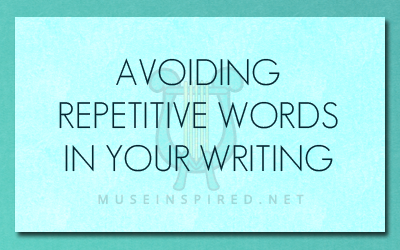 For an individual that loves to spend hours every day writing paragraphs upon paragraphs of content, whether it be for a novel, fanfiction, or even a drabble, we often find ourselves trapped by our own love of specific words. Every author will have a sack containing their favorite vocabulary. After all, the words we choose create the style that makes up our unique voice. However, the downside to those go-to words and a frequent writing schedule is that we’ll forget to diversify. Repetitive words (even amazing words) will leave your work stale or even diminish the impact you were trying to make with a certain sentence.
Take a look at some of your writing. Do you see any words in there that you seem to use all the time? Repeatedly? Several times in the same scene? We’re not talking about the common words like “the” or “and”. Descriptive words! Said. Awesome. Good. Nice. Mad. Engorged.
If you find yourself over using a word, switch it out with something different. You might find that changing that one single world can add a whole different kind of atmosphere or oomph to the scene. Adding additional words can flesh it out even more.
For an individual that loves to spend hours every day writing paragraphs upon paragraphs of content, whether it be for a novel, fanfiction, or even a drabble, we often find ourselves trapped by our own love of specific words. Every author will have a sack containing their favorite vocabulary. After all, the words we choose create the style that makes up our unique voice. However, the downside to those go-to words and a frequent writing schedule is that we’ll forget to diversify. Repetitive words (even amazing words) will leave your work stale or even diminish the impact you were trying to make with a certain sentence.
Take a look at some of your writing. Do you see any words in there that you seem to use all the time? Repeatedly? Several times in the same scene? We’re not talking about the common words like “the” or “and”. Descriptive words! Said. Awesome. Good. Nice. Mad. Engorged.
If you find yourself over using a word, switch it out with something different. You might find that changing that one single world can add a whole different kind of atmosphere or oomph to the scene. Adding additional words can flesh it out even more.
